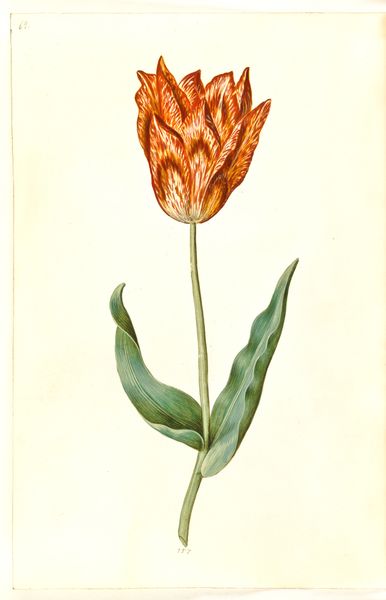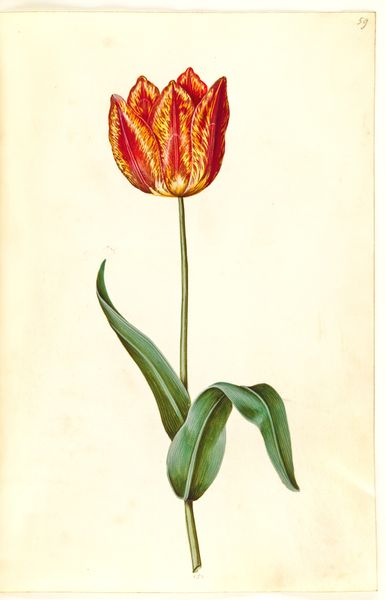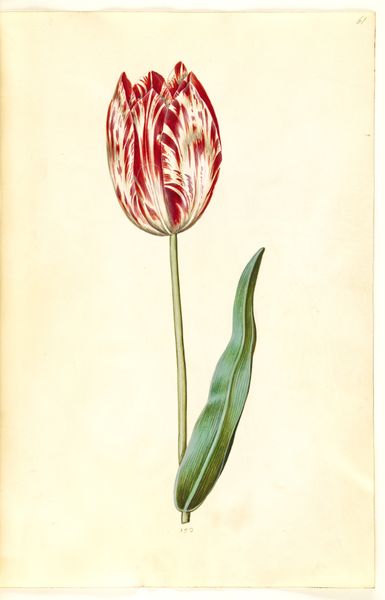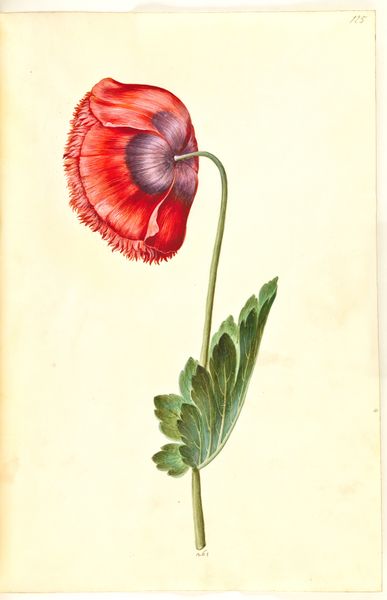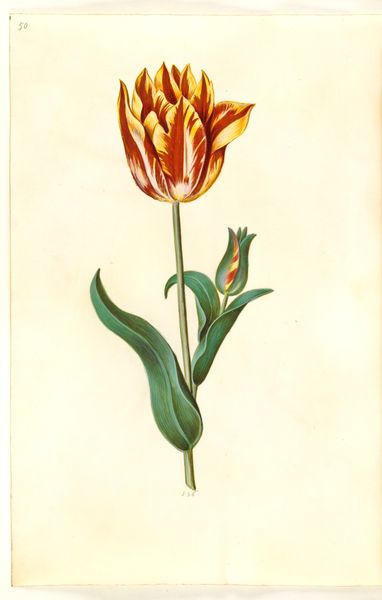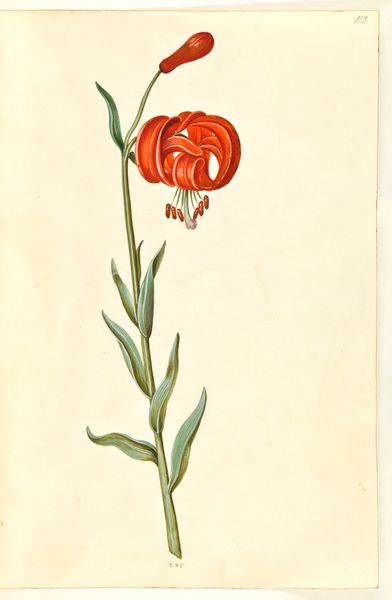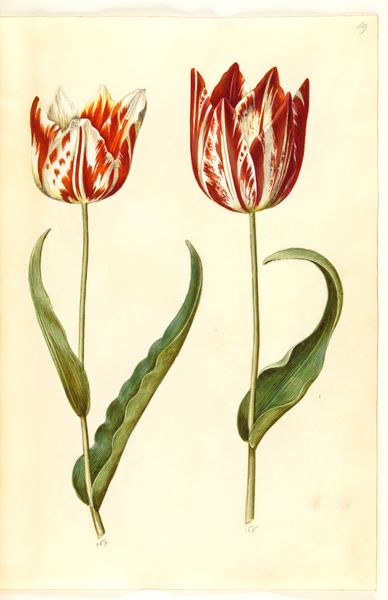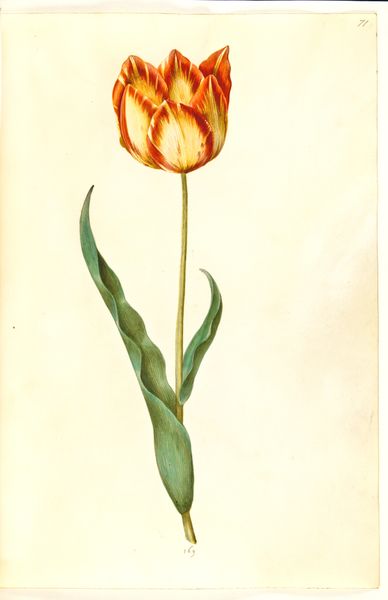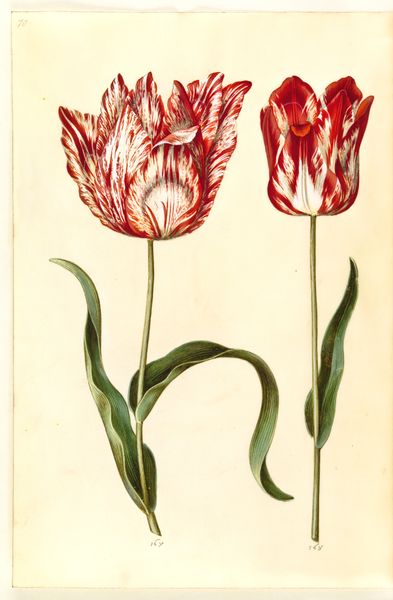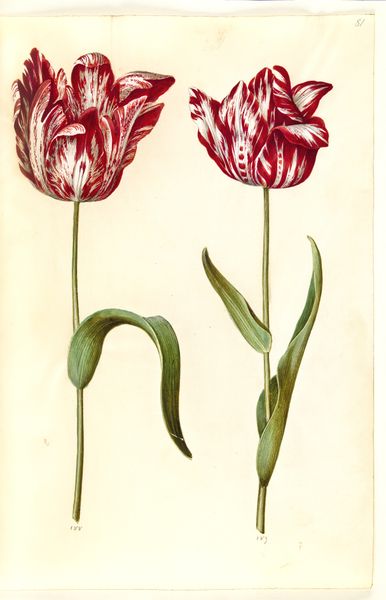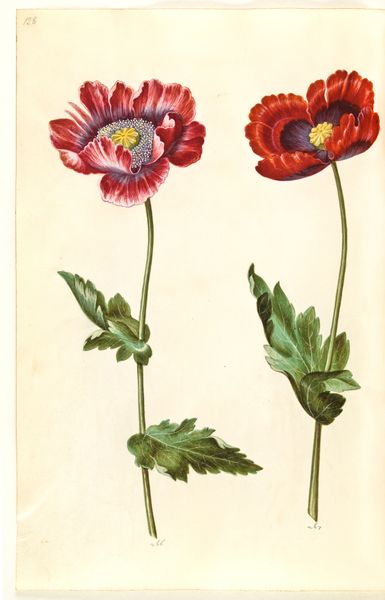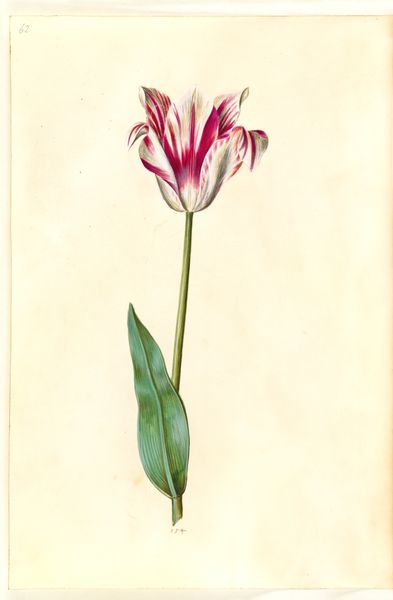
drawing, gouache, watercolor
#
drawing
#
gouache
#
watercolor
#
watercolour illustration
#
northern-renaissance
#
botanical art
#
watercolor
Dimensions: 375 mm (height) x 265 mm (width) x 85 mm (depth) (monteringsmaal), 358 mm (height) x 250 mm (width) (bladmaal)
Curator: At first glance, there’s something so striking about the crispness of line and the almost austere simplicity. It is an illustration of *Papaver somniferum*, the opium poppy. Editor: It has a scientific accuracy, certainly, but that vibrant splash of crimson, those almost electric stamen tips against the ghostly white...it’s unsettling, subtly so, yet captivating. Curator: Indeed. This watercolor, gouache and drawing creation originates from sometime between 1635 and 1664. It’s attributed to Hans Simon Holtzbecker. And is a part of the collection right here at the SMK, the National Gallery of Denmark. Editor: Knowing it's Holtzbecker and dating it to the Northern Renaissance period clarifies a lot. It reflects that era's intense engagement with botanical studies. Curator: The piece really speaks to the detail valued in botanical illustration of that time. It meticulously captures the poppy’s distinctive form – the serrated leaves, the elegant stem, and of course that almost otherworldly bloom. Note, especially, the almost unnaturally straight stem as if striving for purity or truth? Editor: Absolutely. There's also a darker angle, perhaps unintended by the artist. Consider the global politics surrounding opium cultivation. A seemingly innocent botanical rendering touches upon colonial economies and power. The poppy itself is an empire seed of sorts. Curator: A fair point, although my attention focuses more intently on how it represents a confluence of meticulous observation, aesthetic choices, and artistic ability. The color palette here feels restricted, emphasizing structure. Editor: Yet that disciplined palette only serves to heighten the unnerving quality of the poppy's crimson crown. Ultimately, it represents something beyond just natural form for a society deeply enmeshed in mercantile colonial adventures. Curator: Perhaps we can agree on the synthesis between careful representation and, possibly unintended, but powerful implications makes the work all the more alluring. Editor: It certainly provides an interesting tension—a visual pleasure charged with an underlying social tension. Worth contemplating further, no doubt.
Comments
No comments
Be the first to comment and join the conversation on the ultimate creative platform.

